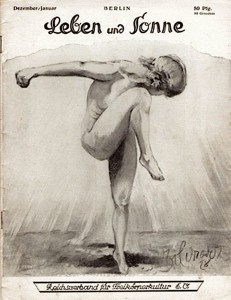 Found in the December 1935 issue of The Collector’s Miscellany is this extract from Nudelife, a magazine devoted to Naturism.
Found in the December 1935 issue of The Collector’s Miscellany is this extract from Nudelife, a magazine devoted to Naturism.
To the astonishing number of hobbies, quaint, varied, cheap, expensive, voluminous or requiring very little space of time, already practised by countless numbers of all ranks, sexes, ages and colour throughout the whole world, may be added this new one—thanks to nudism—that of collecting nudist magazines, either for pride of possession, or scientific, art or educational adjuncts. The field is a new one, and provided a spice of novelty, not to say thrills or even risk, inasmuch very many foreign publications, particularly German, have been prohibited or suppressed. To collect these latter publications is no crime, but they must be kept private and for the purposes above mentioned to be absolutely on the safe side. The number of German magazines have been many and varied and of comparatively short duration except in the case of an outstanding two or three. They are marked chiefly for their frank portrayal of free-body culture between the sexes in the open fields or nudist camps, with a few indoor nude studies sandwiched in between, in the matter of half-tone illustrations, which are noted for their beauty of form, relation to natural surroundings, valued instruction in sex hygiene, the value of sunlight in health . The word obscene has crept in with regard to these magazines, which are displayed for sale or are sold for a purpose other than as necessary adjuncts to the culture of science, art or specific education. In this case it would be most advisable to earmark the collection under one or more of these headings and mark strictly private and personal. In our case they become included in our Nudelife dossier for the relativity of the movement. Some other nudist countries, or better still, some other countries having a nudist movement within its confines, have at one or two publications which will eventually be more accessible and obtainable perhaps than was the case of Germany, for collectors.
So here we have a justification, on the grounds of their educational or scientific value, for collecting what, in a recent Jot, R. Edynbry argues are merely obscene “ art “ magazines, fit only for the stupid and ignorant. Despite the fact that the anonymous author of this piece emphasises the legality of collecting nudist magazines, the whole defence is set about with cautions and suggestions as to how such material might be kept away from the prying eyes of the censor. [R.M.Healey]


 Found in a copy of John O’London’s Weekly for 18th April 1952 is a review of Collector’s Progress by Wilmarth Lewis ( 1895 – 1979) in which the author reveals that the combination of wealth and a collector’s obsession brought about the greatest collection of manuscripts relating to Horace Walpole in the world.
Found in a copy of John O’London’s Weekly for 18th April 1952 is a review of Collector’s Progress by Wilmarth Lewis ( 1895 – 1979) in which the author reveals that the combination of wealth and a collector’s obsession brought about the greatest collection of manuscripts relating to Horace Walpole in the world.
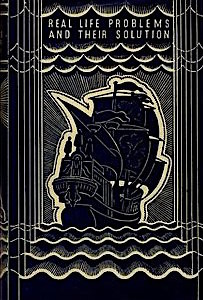
 Found in a thriller by
Found in a thriller by 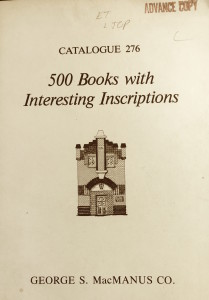 Found – a 1982 book collector’s catalogue from George S Macmanus of Philadelphia 500 Books with Interesting Inscriptions. Mostly modern American and British literature, it has many direct signed presentation from the authors and many
Found – a 1982 book collector’s catalogue from George S Macmanus of Philadelphia 500 Books with Interesting Inscriptions. Mostly modern American and British literature, it has many direct signed presentation from the authors and many 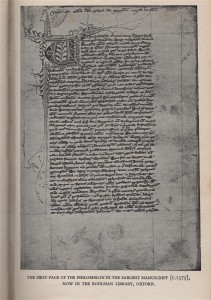 Bishop Bury of Durham spent so much money on books that he lived in dire poverty and debt and when he died all that could be found to cover his corpse was some underwear belonging to his servant.
Bishop Bury of Durham spent so much money on books that he lived in dire poverty and debt and when he died all that could be found to cover his corpse was some underwear belonging to his servant.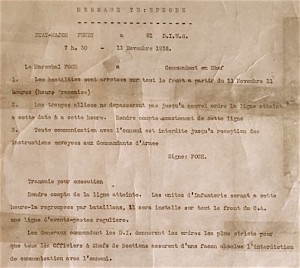


 Found in a copy of the October 1936 issue of The Collector’s
Found in a copy of the October 1936 issue of The Collector’s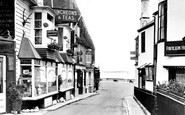 Found in that repository of odd facts, The Collector’s Miscellany, is the following short piece by reporter H. A. Owen in the issue for May 1935.
Found in that repository of odd facts, The Collector’s Miscellany, is the following short piece by reporter H. A. Owen in the issue for May 1935.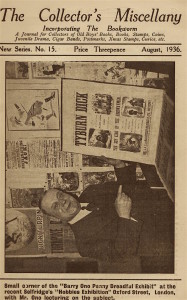

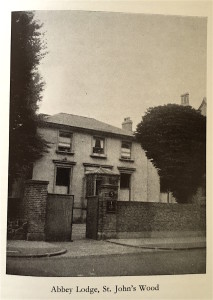 Found in a 1955 Punch – a review by the novelist Anthony Powell of Honours for Sale. The Strange Story of Maundy Gregory. (Gerald Macmillan, London: Richards Press 1954).
Found in a 1955 Punch – a review by the novelist Anthony Powell of Honours for Sale. The Strange Story of Maundy Gregory. (Gerald Macmillan, London: Richards Press 1954). 

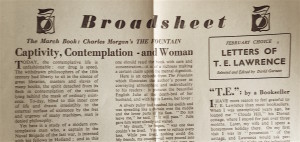 Found among the books in the working library of the actor Peter O’Toole (1932 – 2013) his copy of Letters of T.E. Lawrence (Readers Union, 1941.) O’Toole had surprisingly few books on or by Lawrence considering that this was probably his greatest role and the film that made him an international star. In the Reader’s Union edition was loosely inserted a one page wartime broadsheet keeping members of the book club informed about new publications. It was from an address at Wray Common, Reigate. This broadsheet / flier was dated February 1941and has a good piece (“T.E.”) on Lawrence by his friend and bookseller K.W. Marshall.
Found among the books in the working library of the actor Peter O’Toole (1932 – 2013) his copy of Letters of T.E. Lawrence (Readers Union, 1941.) O’Toole had surprisingly few books on or by Lawrence considering that this was probably his greatest role and the film that made him an international star. In the Reader’s Union edition was loosely inserted a one page wartime broadsheet keeping members of the book club informed about new publications. It was from an address at Wray Common, Reigate. This broadsheet / flier was dated February 1941and has a good piece (“T.E.”) on Lawrence by his friend and bookseller K.W. Marshall.